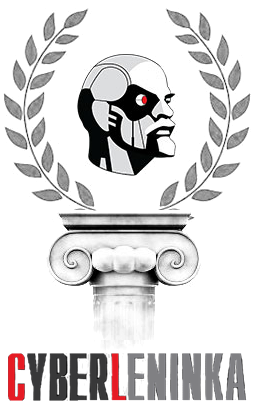- 29 June 2016
Article/Publication Details
Views: 4216
THE END OF ART AND PATOČKA’S PHILOSOPHY OF ART
| Title in the language of publication: | THE END OF ART AND PATOČKA’S PHILOSOPHY OF ART |
| Author: | Jan Josl |
| Issue: |
HORIZON. Studies in Phenomenology. Vol. 5, №1 (2016), 232-246 |
| Language: | English |
| Document type: | Research Article |
| DOI : 10.18199/2226-5260-2016-5-1-232-246 | PDF (Downloads: 3322) |
Abstract
In this essay I consider the end-of-art thesis in its metaphysical and empirical versions. I show that
both use the correspondence theory of truth as the basis for their conception of the history of art. As a
counterpart to these theories I have chosen Patočka’s conception of the history of art. His theory is based
also on the relationship between art and truth, but he conceives truth in the phenomenological sense of
manifestation. In the rest of the essay I seek to show the consequences Patočka’s conception has for the
history of art. In the first part, I set out to show Patocka’s critique of Hegel’s aesthetics as a system based
on the correspondence theory of truth. In particular, I endeavour to explain his critique of some intrinsic
problems of Hegel’s aesthetics, the general failure of Hegel’s system to achieve its goal, and, lastly, Hegel’s
giving up on the meaning of the art in the present. I also seek to show that Danto’s version runs into the
same problems and conclusions as Hegel’s. In the second part I discuss Patočka’s analysis of modern
art and the aesthetic attitude, where he finds a hidden affinity between art and aletheia, which Hegel
overlooked. The last part of the essay focuses on the consequences that the conception of the truth of art
as aletheia have for the history of art. I conclude that art in such a conception represents an independent
field of the manifestation of being in history beside philosophy. Moreover, modern and contemporary art
do not mean the end of art; rather, they have their place in art history based on aletheia, since they are
more focused on the manifestation itself than on what is manifested. Unlike Hegel and Danto, therefore,
Patočka retains the historical meaning of modern and contemporary art. His conception of the history
of art, summed up under the idea of aletheia, has greater explanatory potential than Hegel’s and Danto’s
conceptions, and it retains the historical meaning of modern and contemporary art.
Key words
Phenomenology, aesthetics, Jan Patočka, truth, Hegel, Danto, history of art.
References
- Biemel, W. (1985). Bemerkungen zu Jan Patočkas Deutung der Kunst. Phanomenologishe Forschungen: Studien zur Philosophie von Jan Patočka, 17, 32–52.
- Blahutková, D., & Ševčík, M. (2014). Patočkovy interpretace literatury [Patočka’s Interpretations of Literature]. Červený Kostelec: Pavel Mervart. (in Czech).
- Chvatík, I., & Vojtěch, D. (2004). Ediční komentář [Editorial note]. In J. Patočka, Umění a čas [Art and Time]: Vol. I (367–428). Prague: Oikoymenh. (in Czech).
- Chvatík, K. (1990). Filosofie umění Jana Patočky [Jan Patočka’s Philosophy of Art]. Proměny, 27 (4), 28–33. (in Czech).
- Danto, A. C. (1984). The End of Art. The Philosophical Disenfranchisement of Art (81–116). New York, NY: Columbia University Press.
- Hegel, G. F. W. (1975a). Aesthetics: Lectures on Fine Art: Vol. I. Oxford: Oxford University Press.
- Hegel, G. F. W. (1975b). Aesthetics: Lectures on Fine Art: Vol. II. Oxford: Oxford University Press
- Heidegger, M. (1998). Plato’s Doctrine of Truth. In W. McNeill (Ed.), Pathmarks. Cambridge: Cambridge University Press.
- Legros, R. (1992). Patočka et Hegel. In M. Richir, & E. Tassin (Eds.), Jan Patočka: Philosophie, phénomenologie, politique (45–53). Grenoble: Millon.
- Major, L. (1967). Sebeuvědomění a čas: K Patočkově interpretaci Hegelovy estetiky [Self-awarness and Time: Notes on Patočka’s Interpretations of Hegel’s Aesthetics]. Filosofický časopis, 15, 625–635. (in Czech).
- Patočka, J. (1968). Husserlova fenomenologická filosofie a “Karteziánské meditace” [Husserl’s Phenomenological Philosophy and “Cartesian Meditations”]. In E. Husserl, Karteziánské meditace [Cartesian Meditations] (161-190). Prague: Svoboda. (in Czech).
- Patočka, J. (1996). Does History Have a Meaning? In J. Dodd (Ed.), Heretical Essays in the Philosophy of History. Chicago, IL: Open Court.
- Patočka, J. (1999). Evropa a doba poevropská [Europe and Post-Europe]. In Péče o duši II [Care for the Soul]. Sebrané spisy [Collected Works]: Vol. II. Prague: Oikoymenh. (in Czech).
- Patočka, J. (2004a). Hegelův filosofický a estetický vývoj [Hegel’s Philosophical and Aesthetic Development]. In J. Patočka, Umění a čas [Art and Time]: Vol. I (227–302) Prague: Oikoymenh. (in Czech).
- Patočka, J. (2004b). K vývoji Hegelových estetických názorů [On the Development of Hegel’s Aesthetic Views]. In J. Patočka, Umění a čas [Art and Time]: Vol. I (216–226). Prague: Oikoymenh. (in Czech).
- Patočka, J. (2004c). Poznámky k polyperspektivě u Picassa [Some Remarks on Polypercpectivity in Picasso]. In J. Patočka, Umění a čas [Art and Time]: Vol. II (30–34). Prague: Oikoymenh. (in Czech).
- Patočka, J. (2004d). Smysl mýtu o paktu s ďáblem [The Meaning of Myth about Pact with the Devil]. In J. Patočka, Umění a čas [Art and Time]: Vol. I (510–525). Prague: Oikoymenh. (in Czech).
- Patočka, J. (2004e). Učení o minulém rázu umění [Hegel’s Conception of Art as a Thing of the Past]. In J. Patočka, Umění a čas [Art and Time]: Vol. I (319–347). Prague: Oikoymenh. (in Czech).
- Patočka, J. (2004f). Úvahy nad Readovou knihou o sochařství [An Essay on Read’s Book on Sculpture]. In J. Patočka, Umění a čas [Art and Time]: Vol. I (441–453). Prague: Oikoymenh. (in Czech).
- Patočka, J. (2006). Spisovatel a jeho věc [Writer and his Thing]. In Češi [Czechs]: Vol I (280–292). Prague: Oikoymenh. (in Czech).
- Patočka, J. (2009). “Přirozený svět” v meditaci svého autora po třiatřiceti letech [“The Natural World” Reconsidered thirty-three Years Later]. In Fenomenologické spisy II (265-334). Prague: Oikoymenh. (in Czech).
- Patočka, J. (2015). Art and Time. Estetika: The Central European Journal of Aesthetics, 52(1), 99-113.
- Ševčík, M. (2014) Umění jako vyjádření smyslu: Filozofie umění Jana Patočky [Art as an Expression of Sense: Jan Patočka’s Philosophy of Art]. Červený Kostelec: Pavel Mervart. (in Czech).
- Ševčík, M. (2015). Patočka’s Interpretations of Hegel’s Thesis on the Past Character of Art. Estetika: The Central European Journal of Aesthetics, 52(1), 78–113.
- Šrubař, I. (1987). Zur Stellung der Kunst in Patočkas Philosophie. In J. Patočka, Kunst und Zeit (31-48). Stuttgart: Klett Cotta.
- Zuska, V. (2002). Mimésis — fikce — distance: k estetice XX. století [Mimésis — Fiction — Distance: to the Aesthetics of the XXth Century]. Prague: Triton.

This work is licensed under a Creative Commons Attribution-NonCommercial 4.0 International License.

|
|
|
|
|

|
|
|
|
|

|
|
|
|
|
|
|
|
|
|
|
|
|
|
|
|
|
|
|
|
|
|

|
|
|
|
|
|
|
|
|
|
|
|
|
|
|
|
|
|
|
|
|
|
|
|
|
|
|
|

|

|
Social networks:





